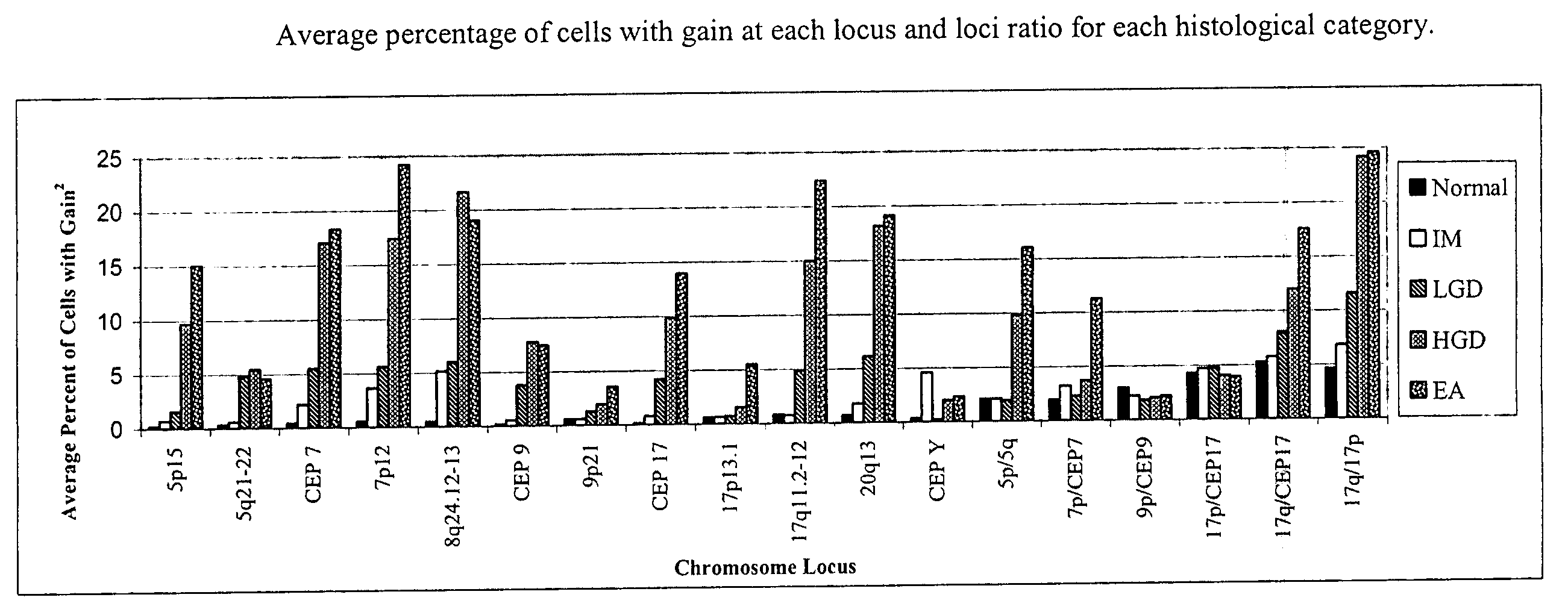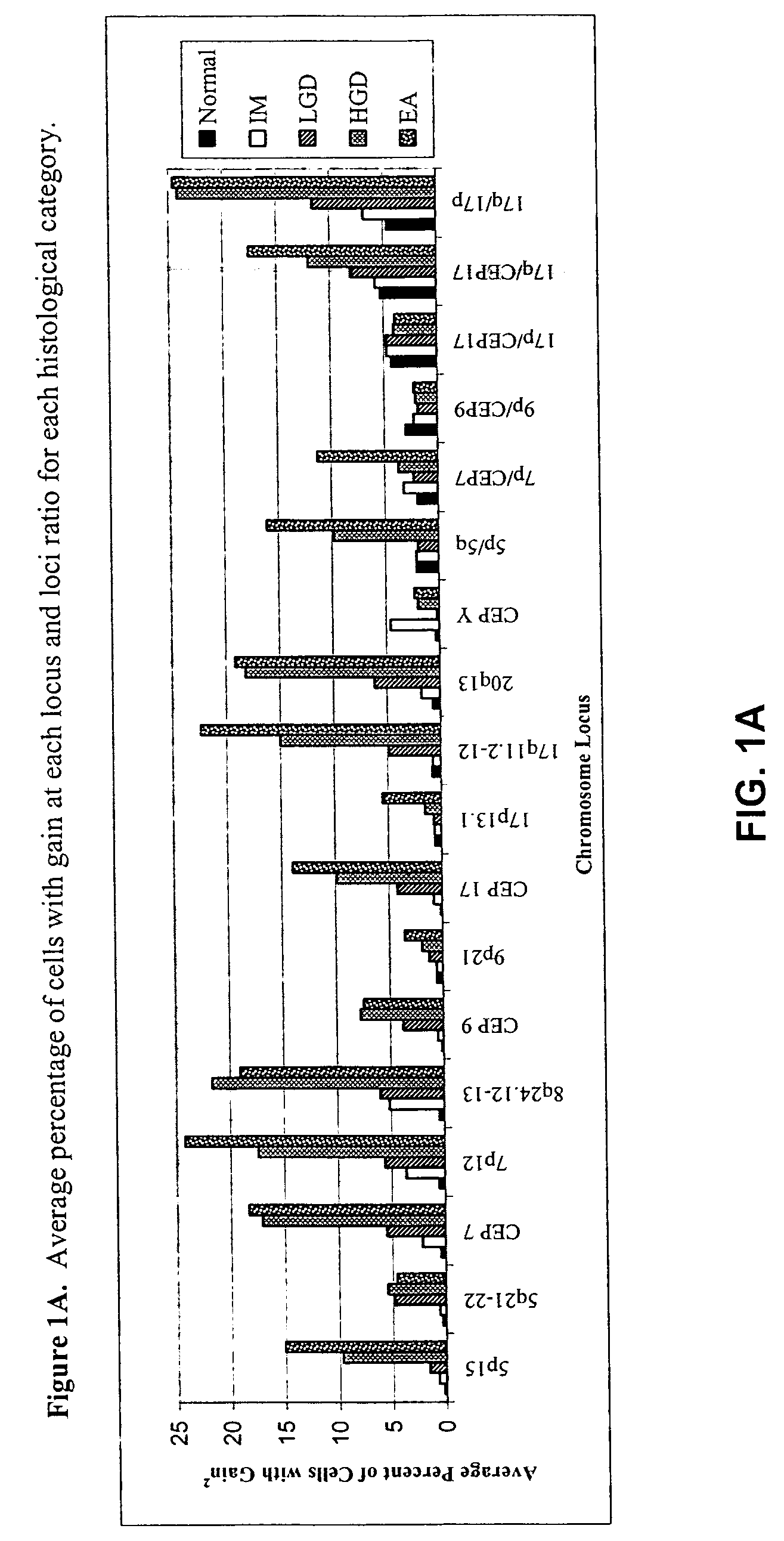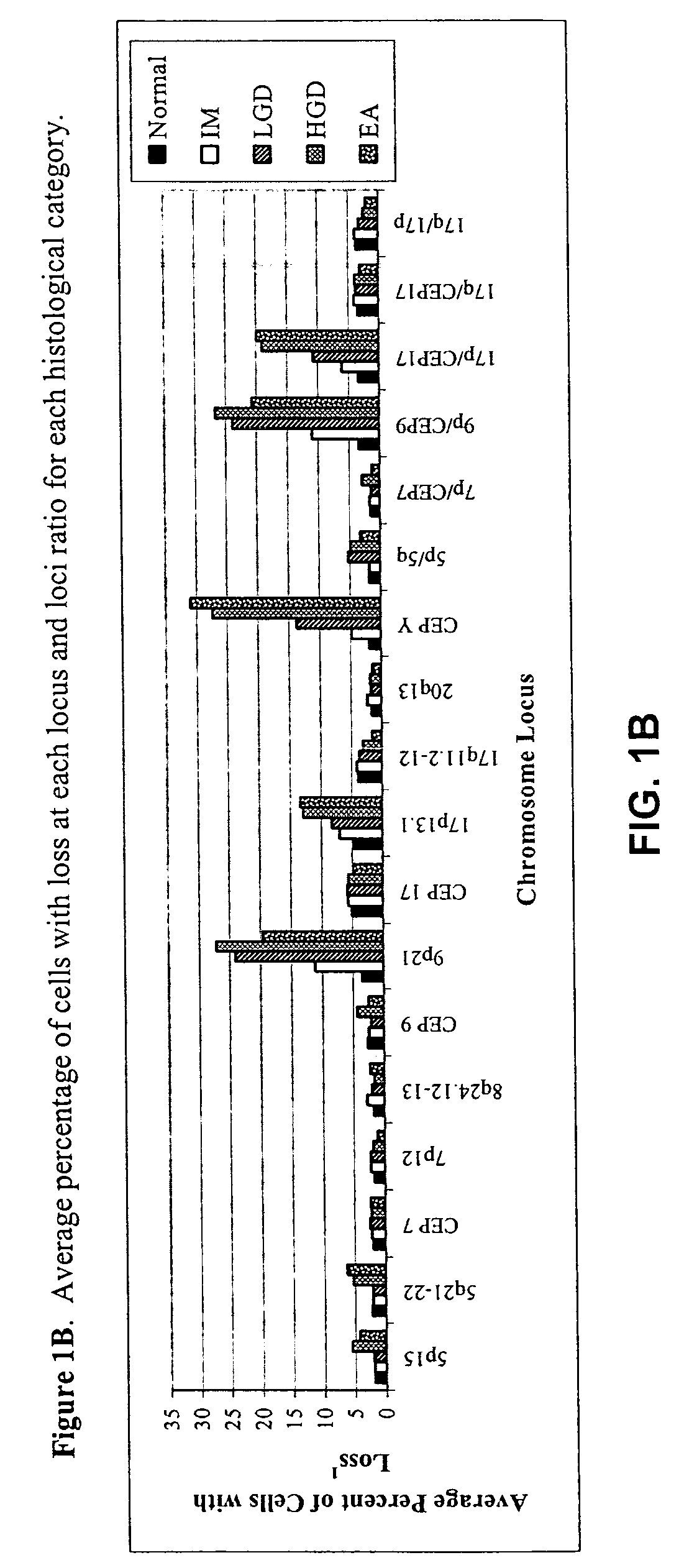Methods and probes for detecting esophageal cancer
a technology probes, applied in the field of methods and probes for detecting esophageal cancer, can solve the problems of poor inter-observer reproducibility of pathologists for the diagnosis of lgd and hgd, not frequently followed, limited sampling, etc., and achieve the effect of better results
- Summary
- Abstract
- Description
- Claims
- Application Information
AI Technical Summary
Benefits of technology
Problems solved by technology
Method used
Image
Examples
example 1
Probe Selection
FISH Probe Sets
[0057] FISH was performed with three unique probe sets. Each probe set contained four chromosome enumeration probes (CEP®) or locus specific identifiers (LSI®) to centromeres or specific loci of chromosomes that have been shown to be frequently altered in patients with BE-associated neoplasia (Table 1). The CEP 7, CEP 9, and CEP 17 probes were included to determine allelic gain or loss of the corresponding LSI probes on those chromosomes (e.g., 9p21 on chromosome 9) or aneusomy of those chromosomes.
TABLE 1FISH Probes and Gene Target Locations Used for Probe SelectionProbeSetRedGreenAquaGoldILSI 9p21LSI 5p15CEP 9LSI 5q21-22(P16)(APC)IICEP YLSI 17q11.2-12CEP 17LSI 17p13.1 (P53)(HER2 / NEU)IIILSI 20q13.2LSI 8q24.12-13CEP 7LSI 7p12 (EGFR)(C-MYC)
With the exception of the LSI® 5q21-22 (APC) probe, the LSI® and CEP® probes are commercially available from Vysis, Inc. (Downers Grove, Ill., www.vysis.com) labeled with SpectrumOrange™. Instead of the Spectrum...
example 2
Esophageal Cancer Detection
[0092] As a non-limiting exemplification of the present invention, the four-color probe set 8q24.12-13, 9p21, 17q11.2-12 and 20q13, described in Example 1 above, was used to assess esophageal brushing samples for the presence of cells that have chromosomal abnormalities consistent with a diagnosis of LGD, HGD, or EA. Samples were prepared for FISH hybridization and subject to hybridization with the probe set as described in the probe selection study (Example 1, above) and as described below. For cases in which the initial 100-cell enumeration was negative for polysomy, the remainder of the slide was scanned for morphologically abnormal cells (e.g., nuclear enlargement, nuclear irregularity and mottled chromatin staining) and their FISH hybridization patterns of these cells also recorded.
Cell Harvest
[0093] A 50 mL centrifuge and a 1.8 ml micro-centrifuge tube were labeled with appropriate patient identifiers. The specimen container (PreservCyt™ solutio...
PUM
| Property | Measurement | Unit |
|---|---|---|
| temperature | aaaaa | aaaaa |
| temperature | aaaaa | aaaaa |
| volume ratio | aaaaa | aaaaa |
Abstract
Description
Claims
Application Information
 Login to View More
Login to View More - R&D
- Intellectual Property
- Life Sciences
- Materials
- Tech Scout
- Unparalleled Data Quality
- Higher Quality Content
- 60% Fewer Hallucinations
Browse by: Latest US Patents, China's latest patents, Technical Efficacy Thesaurus, Application Domain, Technology Topic, Popular Technical Reports.
© 2025 PatSnap. All rights reserved.Legal|Privacy policy|Modern Slavery Act Transparency Statement|Sitemap|About US| Contact US: help@patsnap.com



